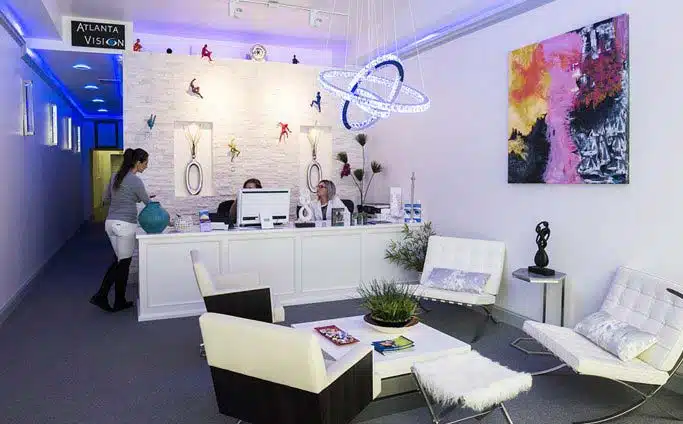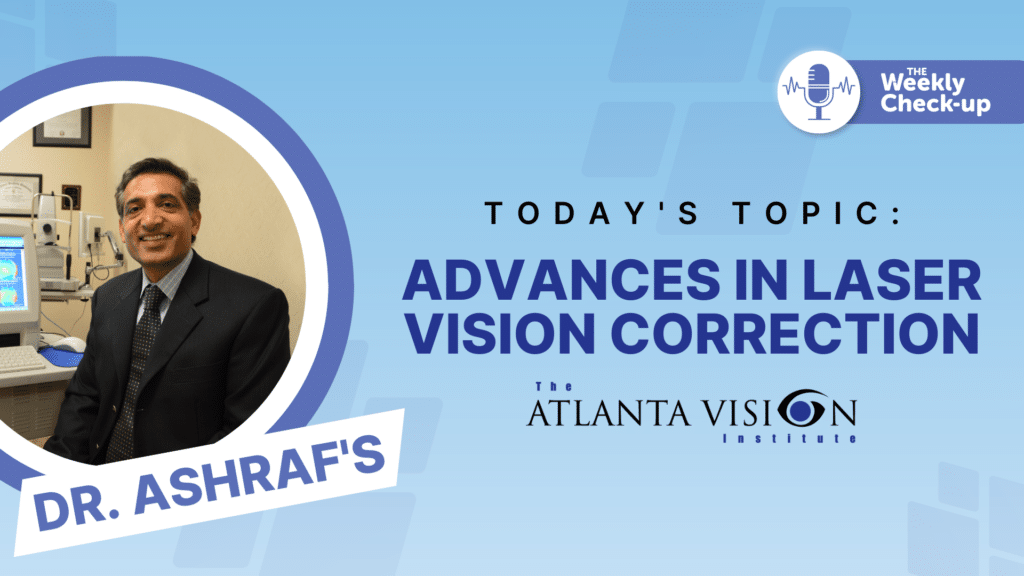Laser eye surgery has come a long way in the past 40 years, evolving from a groundbreaking procedure to an even more refined and effective vision correction method. With the advent of new technologies and techniques, laser vision correction advances have provided patients today with better options and outcomes than ever before.
These advancements have made procedures safer, faster, and more accessible, transforming the way we approach vision care. Let’s explore how laser eye surgery has evolved and what modern procedures look like today.
The Evolution of Laser Eye Surgery
When LASIK (Laser-Assisted In Situ Keratomileusis) first became popular, it was celebrated for its ability to correct vision with impressive results. Over the years, the technology has advanced significantly, introducing new modalities that either complement or offer alternatives to traditional LASIK. These advancements have improved precision, safety, and patient outcomes, making laser eye surgery more accessible and effective.
Timeline of Laser Eye Surgery
- 1983: Laser eye surgery is invented.
- 1987: The first excimer laser is used on a patient’s eyes.
- 1990: FDA begins clinical trials for laser eye surgery.
- 1995: LASIK surgery is approved by the FDA.
- 2001: Wavefront-guided LASIK is introduced, offering more precise corrections.
- 2007: The first femtosecond laser for LASIK is approved, allowing for bladeless procedures.
- 2011: SMILE surgery is introduced internationally.
- 2016: SMILE receives FDA approval in the United States.
- 2020: Advances in technology allow for faster recovery times and fewer complications.
Modern Laser Eye Surgery Procedures
Today’s laser eye surgery procedures are more sophisticated and patient-friendly than their predecessors. Most patients opt to have both eyes treated simultaneously, a choice made by over 99% of individuals undergoing the procedure.
The surgery itself is quick, usually taking about 10-15 minutes per eye. The process involves reshaping the cornea to correct refractive errors, such as nearsightedness, farsightedness, and astigmatism, using highly advanced laser technology.
Recovery Process and Expectations
One of the major benefits of modern laser eye surgery is the quick recovery after laser eye surgery. Patients typically experience a slight burning or tingling sensation immediately after the procedure, which subsides quickly. It’s often recommended to go home and rest for a few hours.
Remarkably, most people find that their vision begins to improve significantly by the evening and reaches about 90% clarity by the next morning. This quick recovery after laser eye surgery allows patients to resume daily activities, including driving and working, as early as the day after surgery.
SMILE: The Ultimate Laser Eye Surgery Advancement
SMILE (Small Incision Lenticule Extraction) is a cutting-edge procedure that is increasingly becoming the preferred choice for laser vision correction. Approved by the U.S. FDA, SMILE surgery combines the benefits of PRK and LASIK while minimizing their drawbacks.
How Does It Work?
SMILE is a flapless, bladeless, and noiseless procedure that takes less than 30 seconds per eye. Unlike LASIK, which requires creating a corneal flap, SMILE uses a Femtosecond laser to make a small incision and reshape the cornea. This approach eliminates the need for a corneal flap, reducing the risk of flap-related complications and preserving the cornea’s structural integrity.
Benefits of SMILE
The recovery time for SMILE is notably short. Most patients can resume their normal routines quickly, often experiencing little to no discomfort. The microscopic incisions made during the surgery heal within a day, and because there is no flap, patients avoid the risks associated with flap complications. Additionally, SMILE is less disruptive to the cornea, which can be beneficial for those with dry eyes or who are highly active.
Is SMILE Right for You?
SMILE is suitable for individuals with myopia between -1 and -10 diopters and up to 3 diopters of astigmatism. It’s an excellent option for those who are active, exposed to occupational hazards, or in need of rapid recovery.
However, it may not be suitable for individuals with certain health conditions, such as advanced glaucoma, uncontrolled diabetes, or insufficient corneal thickness. A comprehensive eye examination is essential to determine if SMILE is the right choice for you.
Exploring Other Advanced Laser Vision Correction Surgeries
In addition to LASIK and SMILE, there are other advanced treatments available for correcting refractive errors. These emerging technologies offer unique benefits and are suitable for different individual needs. Beyond refractive surgery, advancements in cataract surgery have also revolutionized the way we treat age-related vision loss, providing patients with quicker recovery times and improved visual outcomes.
LaserOptix™
LaserOptix is unique in its ability to address both distance and near vision correction due to its combination of advanced lens surgery and the PanOptix trifocal intraocular lens. This comprehensive approach makes it an ideal solution for those experiencing age-related vision decline, are highly active, or exposed to occupational hazards.
The LenSx laser offers computer-controlled precision, automating the most challenging steps of refractive lens surgery and optimizing all incisions for enhanced surgical results. The PanOptix lens provides clear vision at near, intermediate, and far distances, effectively eliminating the need for reading glasses or bifocals.
Cataract Surgery
Cataract surgery is necessary to restore vision when the eye’s natural lens becomes cloudy due to aging. This procedure involves removing the cloudy lens and replacing it with a clear artificial lens. It’s a straightforward and safe outpatient procedure, making it ideal for those whose daily activities, such as driving or reading, are affected by cataracts.
Modern cataract surgery uses “eye drop” anesthesia, eliminating the need for needles and ensuring a comfortable experience for patients. The surgeon makes a small incision and uses a technique called phacoemulsification to break up the cloudy lens with ultrasound energy.
The cataract remnants are then removed, and a clear intraocular lens is inserted. Advances in laser technology – such as the femtosecond laser – allow for precise, blade-free cuts and reduce astigmatism, enhancing surgical outcomes and speeding up recovery times.
PRK (Photorefractive Keratectomy)
PRK is a valuable option for individuals with thinner corneas or those who are not suitable candidates for LASIK. This procedure involves removing the thin outer layer of the cornea (epithelium) to reshape the underlying corneal tissue using an excimer laser. PRK eliminates the need for a corneal flap, reducing the risk of flap-related complications.
The recovery time for PRK is longer than LASIK because the epithelium (thin layer of tissue) needs to regenerate, which can take a few days. During this period, patients may experience discomfort and blurred vision. Despite the longer recovery, PRK provides excellent visual outcomes, making it a viable choice for individuals seeking long-term vision correction without the risks associated with corneal flaps.
Start Your Laser Vision Correction Journey Today
If you’re considering laser eye surgery, consulting with a trusted specialist can make all the difference. At Atlanta Vision Institute, our experienced team is here to guide you through the process, ensuring you receive the best care tailored to your vision needs.
Led by Dr. Farooq Ashraf, Atlanta Vision Institute offers personalized treatment plans, cutting-edge technology, and a commitment to excellence. Don’t wait any longer — start your journey towards optimal eye health and vision today by scheduling a free virtual consultation.
Contact us online or call (678) 902-8338 to learn more!

Please Take Our LASIK or Cataract Surgery Quiz
Take our vision quiz to find out if you qualify for LASIK or cataract surgery!



